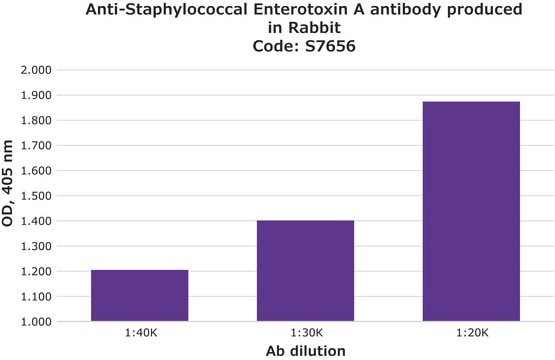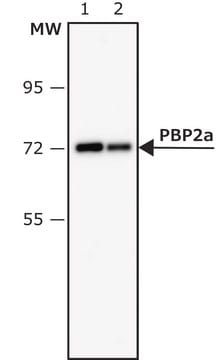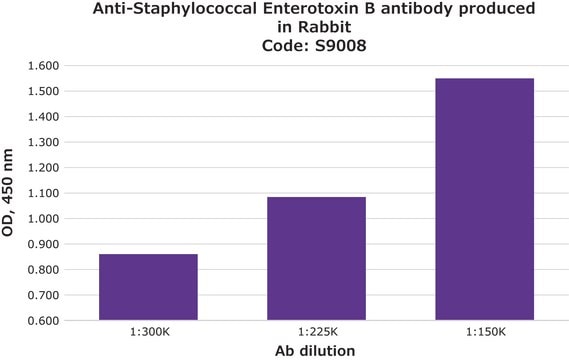SAB4200859
Anti-Staphylococcus Enterotoxin B antibody, Mouse monoclonal
clone SEB4, purified from hybridoma cell culture
Sinónimos:
Enterotoxin type B, SEB
About This Item
Productos recomendados
forma del anticuerpo
purified from hybridoma cell culture
Nivel de calidad
clon
SEB4
formulario
liquid
reactividad de especies
Staphylococcus aureus ((Staphylococcal enterotoxin B))
concentración
~1 mg/mL
técnicas
ELISA: 0.12-0.25 μg/mL using 1 μg/ml staphylococcal enterotoxin B for coating.
immunoblotting: 0.5-1 μg/mL using staphylococcal enterotoxin B.
isotipo
IgG1
Nº de acceso UniProt
Condiciones de envío
dry ice
temp. de almacenamiento
−20°C
modificación del objetivo postraduccional
unmodified
Descripción general
Especificidad
Aplicación
Acciones bioquímicas o fisiológicas
Forma física
Almacenamiento y estabilidad
Cláusula de descargo de responsabilidad
Código de clase de almacenamiento
12 - Non Combustible Liquids
Clase de riesgo para el agua (WGK)
nwg
Certificados de análisis (COA)
Busque Certificados de análisis (COA) introduciendo el número de lote del producto. Los números de lote se encuentran en la etiqueta del producto después de las palabras «Lot» o «Batch»
¿Ya tiene este producto?
Encuentre la documentación para los productos que ha comprado recientemente en la Biblioteca de documentos.
Nuestro equipo de científicos tiene experiencia en todas las áreas de investigación: Ciencias de la vida, Ciencia de los materiales, Síntesis química, Cromatografía, Analítica y muchas otras.
Póngase en contacto con el Servicio técnico








